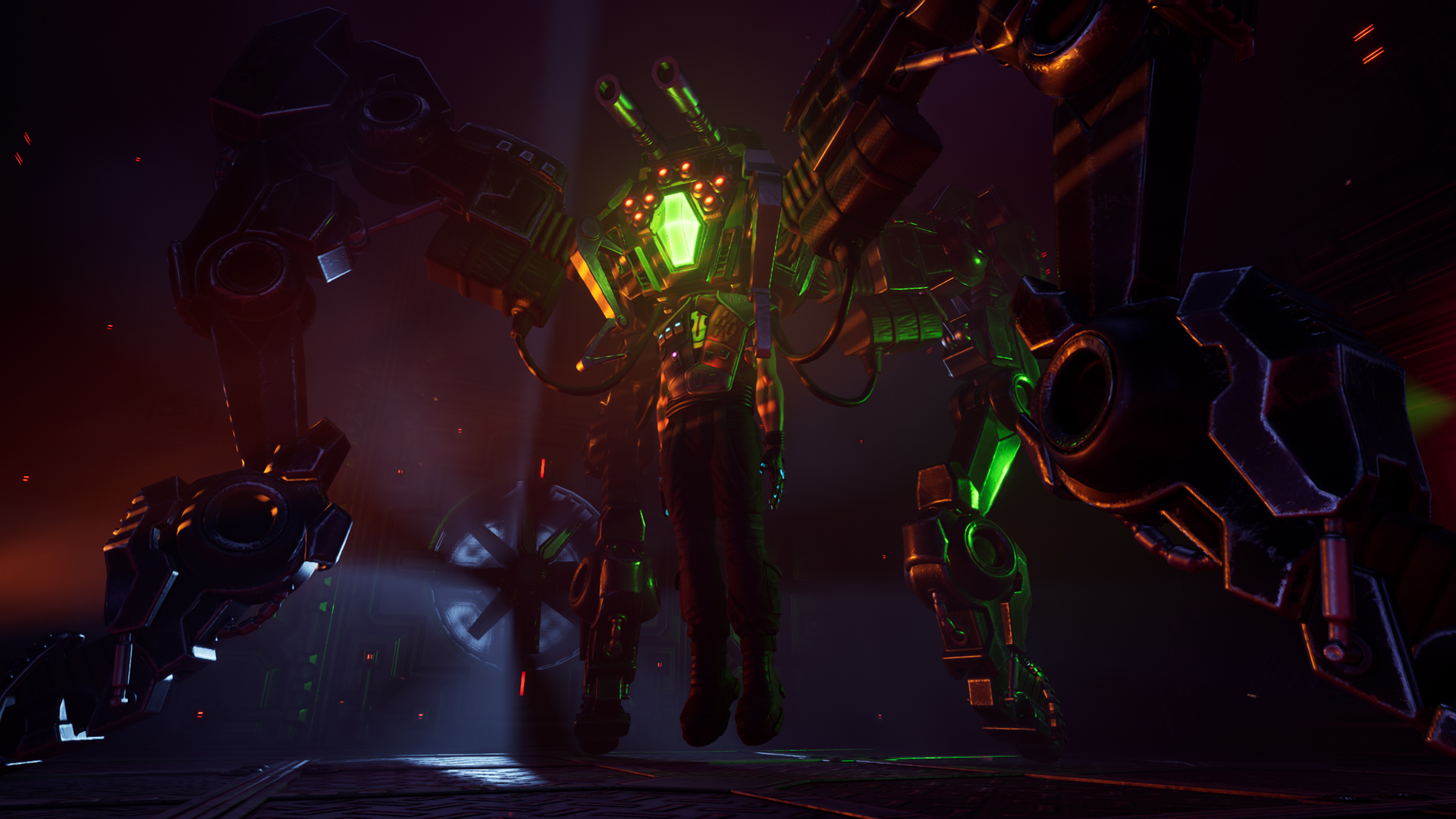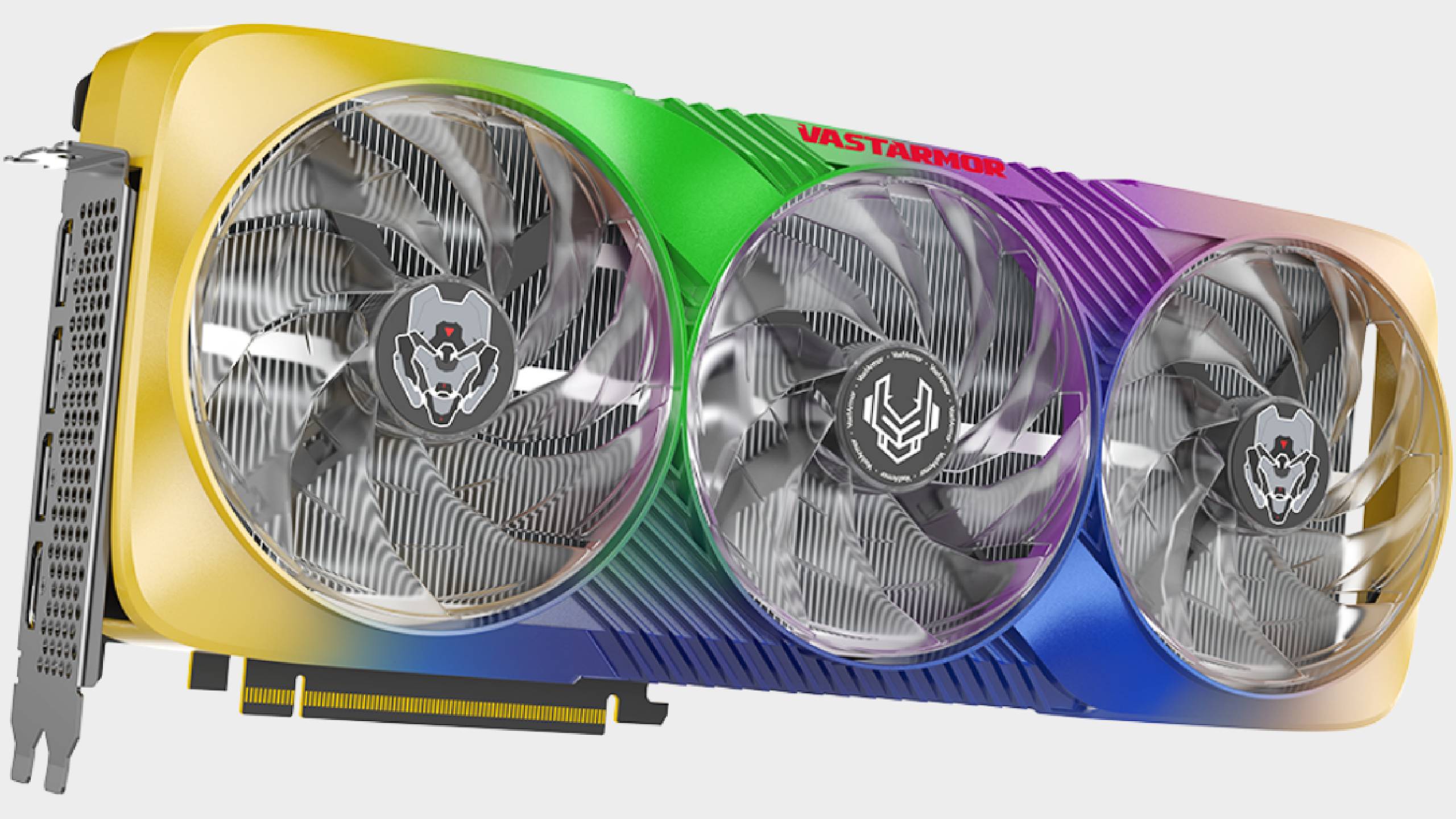
As the System Shock remake nears completion, Nightdive Studios talks about the game's long road to release.
(Image credit: Future)
This article first appeared in PC Gamer magazine issue 380 in February 2023. Every month we run exclusive features exploring the world of PC gaming—from behind-the-scenes previews, to incredible community stories, to fascinating interviews, and more.
Nightdive Studios’ remake of System Shock has been in development for almost eight years. Originally announced in 2015, it’s had a longer development cycle than both existing System Shock games combined, and that includes the gap between them. But Nightdive’s long-incubated cyber-baby is finally preparing for birth, with release currently scheduled for March this year. Yet what kind of remake are we getting after all this time, and how does the final version compare to Nightdive’s original vision?
“The game that we’re going to be launching soon, is the game that I think we were all dreaming of making, but that we didn’t initially set out to make.” Stephen Kick, co- founder of Nightdive Studios and co-director on System Shock. “If you look at that early prototype versus what we have now, it’s an entirely different game, but essentially the same experience you would have, just the level of quality and polishing and everything that we’ve been able to put into it is at a level that we couldn’t have imagined back then.”
If this sounds a little confusing, don’t worry. The whole reason System Shock has been gestating for so long is Nightdive has constantly wrestled with what the remake ought to represent. What it should be, what it needs to be, what fans want it to be, and what Nightdive wants it to be have all factored into its design at varying points. Striking the right balance has been extremely challenging, to the extent where the entire project was rebooted three years into development.
Amidst all this is a question—why go to such effort to remake System Shock at all? “A lot of people have played System Shock 2 and not the first one, due to how pure it is, and how difficult it can be even to get in and control the character or use the interface,” Kick says. While today System Shock is categorised as an immersive sim, it was designed as a sci-fi successor to the fantasy RPG Ultima Underworld, and used many of the same D&D- adjacent rules and conventions. System Shock also launched right before advancement in 3D graphics and first-person gameplay exploded, such that when the sequel released in 1999, the fidelity gap between the two was enormous.
In short, there’s a clear case for remaking System Shock, and in many ways Night Dive is the ideal studio for the project. Kick’s own journey with System Shock began with that technically advanced sequel. A kid in middle-school at the time, Kick was obsessed with Half-Life, when a friend asked him if he’d played System Shock 2. “The next day, he came in with the full big box, and he just laid it on the table and said, ‘Play it,’ and then he walked away again. It was very dramatic,” Kick says. “I went home that night and I installed it and I remember just immediately being immersed in the world and the Von Braun. Hearing Terri Brosius’ voice as SHODAN still brings chills down my spine.”
(Image credit: Nightdive Studios)
Alongside Kick’s personal history with the series, Night Dive as a business was founded because of System Shock 2, after Kick retrieved the rights to System Shock 2 from legal limbo. Since then, Night Dive has established itself as a specialist developer of remasters, having released improved versions of numerous ’90s titles like Quake, Blood, Powerslave and Shadowman.
Shifting from remasters to a remake might seem like a logical next step. But as Kick explains, that shift involves less of a step and more of a leap. “Our remaster team, or the KEX Engine team, primarily deals with reverse engineering, code work, that type of thing,” Kick explains. “We had to bring on designers, animators, character artists that were all familiar with current day pipelines and game development techniques in order to realise this.”
Due to System Shock’s age, the challenge in remaking it was sufficiently modernising it while staying true to the spirit of the original. In this, Nightdive had two design pillars that it hoped would ground the remake. The first of these was visual. “I knew that we wanted to have Robb Waters, who was the original artist back in ’94, on this project,” Kick explains. “We basically let him look at every aspect of the game and put his twist on it. That in itself has helped build that foundation of that familiarity with the original.”
(Image credit: Nightdive Studios)
The second grounding pillar was mechanical. “We looked at what [System] Shock 2 did, and how that was an evolution from the first game, and brought those systems back to System Shock 1. In that way, we still felt like even though we’re changing and we’re updating it, it’s still part of the System Shock pedigree.”
Nightdive hoped that such appeals to System Shock’s history would ensure the remake stayed authentic. But as the project switched from Unity to Unreal 4 and the vision for the game expanded, new features began to creep in, and Nightdive was faced with a different kind of shock when it pushed an update to its Kickstarter backers in 2018. “Unanimously, the feedback was, ‘Hey, this isn’t what we backed. It’s not what we wanted.'” Kick says. “We really had to take a long break, and we had to look at the team that we had built up to that point and what our goals were.”
Nightdive began the process of rebooting System Shock with a fascinating project—rebuilding the entirety of Citadel Station—the setting for the original game—to its exact dimensions, in Unreal 4. This took seven months, with much of the project streamed live on Twitch. Rebuilding Citadel revealed to Nightdive how closely it could replicate the level design of the original, and the places where changes needed to be made. “Take doors, for example. Those are paper thin in the original, and that would have a surprising knock-on effect” says Daniel Grayshon, co-director, producer, and level designer on System Shock. “This corridor that was so close to this other corridor, because this door now has to be 3D… then that needs to be pushed back a little bit. It was a really interesting, fun process.”
(Image credit: Nightdive Studios)
Combat was a more difficult element to rework. The shift from 2.5D to modern 3D graphics and animation inevitably necessitated some changes. But Nightdive has also looked at what tools the original game gives players, and how those shape up to modern standards. “It was a case of looking at what was there and thinking, ‘How can we vary this up, while also keeping it interesting?'” says Grayshon. “For example, there’s now a grenade launcher in the game. And that grenade launcher comes with benefits. But that grenade launcher also comes with a cost, it takes up room in your inventory.”
One of the most contentious areas Nightdive has reworked is the soundtrack. Kick describes the original soundtrack as “a lot of bleeps and bloops” that are “kind of jarring” when you consider System Shock is a sci-fi horror game. But the System Shock community is extremely fond of the original soundtrack, which has made changing it a tricky prospect. “Our composer has been going back and forth quite a bit to find a balance,” Kick says. “To create an oppressive atmosphere, one that would lend itself to a horror game. But also have throwbacks to that upbeat, fun, dancey soundtrack.”
There are even areas of the game which are arguably more authentic than before. Kick points out that, when Looking Glass released the CD- ROM version of System Shock with added voice lines “the audio portion of it didn’t match the written part”. Hence, Nightdive has used this as an opportunity to re-record the game’s audio logs, hiring a narrative designer to expand upon some of the characters you hear from in Citadel station. According to Grayshon, this includes “lines unused in the original game” which Nightdive has “utilised a fair few of” for the remake. “The beginning of the game is going to be fresh for everyone,” adds Larry Kuperman, Nightdive’s head of business development.
(Image credit: Nightdive Studios)
The debates and decisions over modernisation versus authenticity are fascinating, but they don’t address how System Shock will ultimately play as an RPG/immersive sim, regardless of whether it’s ‘true’ to the original. “We have a lot of things going on under the hood,” Grayshon says. “If you’re up against a cyborg, which is part machine part human, it can really depend on where you target a specific part of the body and the specific ammo that you’re using. So if you hit the metal part with armour piercing rounds that will do more damage.”
Grayshon also shares an anecdote from a recent play test. “I was facing two enemies in a corridor, and one tried to throw a EMP grenade at me, but he missed me and ended up hitting his friend who was also attacking me, which disabled him. I was like, ‘OK, I can use this to my advantage.'” Regardless of authenticity, that sounds like a game I want to play.
It may have been a long wait for the System Shock remake, but it does sound like it’s going to be worth it. Besides, System Shock fans are used to waiting, given how long it has been since System Shock 2. There have been spiritual successors of course, like Irrational’s Bioshock and Arkane’s Prey. But what of OtherSide Entertainment’s System Shock 3 project, which despite a whole bunch of issues is, as far as we know, still in development? “I would urge both the press and the fans to wait and see a little bit longer” Kuperman says when I ask about that game. “Let’s see what happens after the current System Shock game comes out.”






